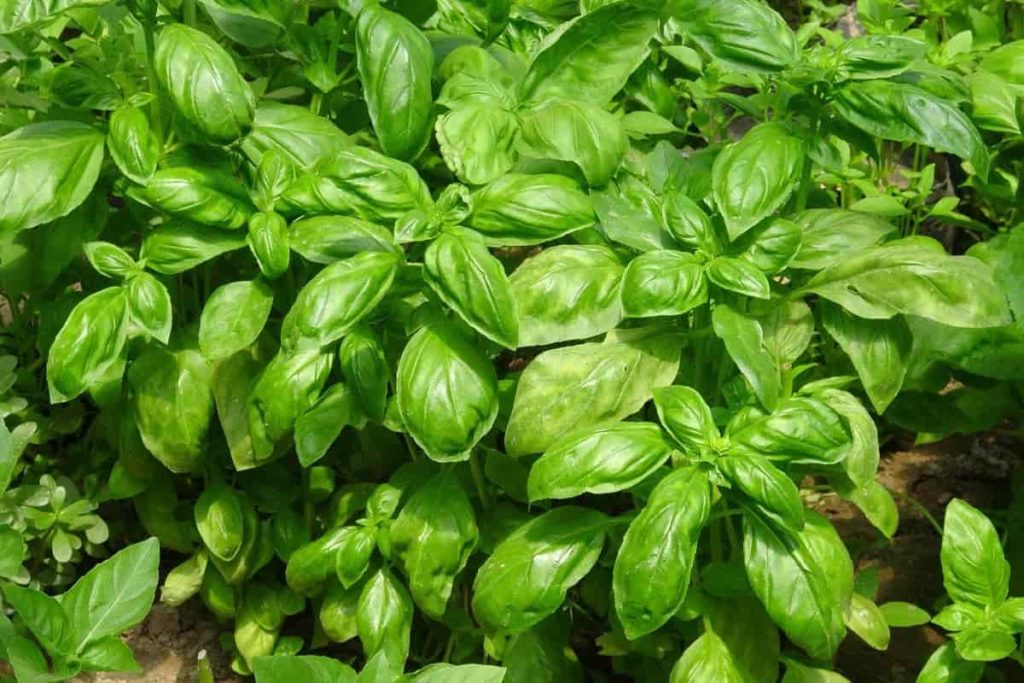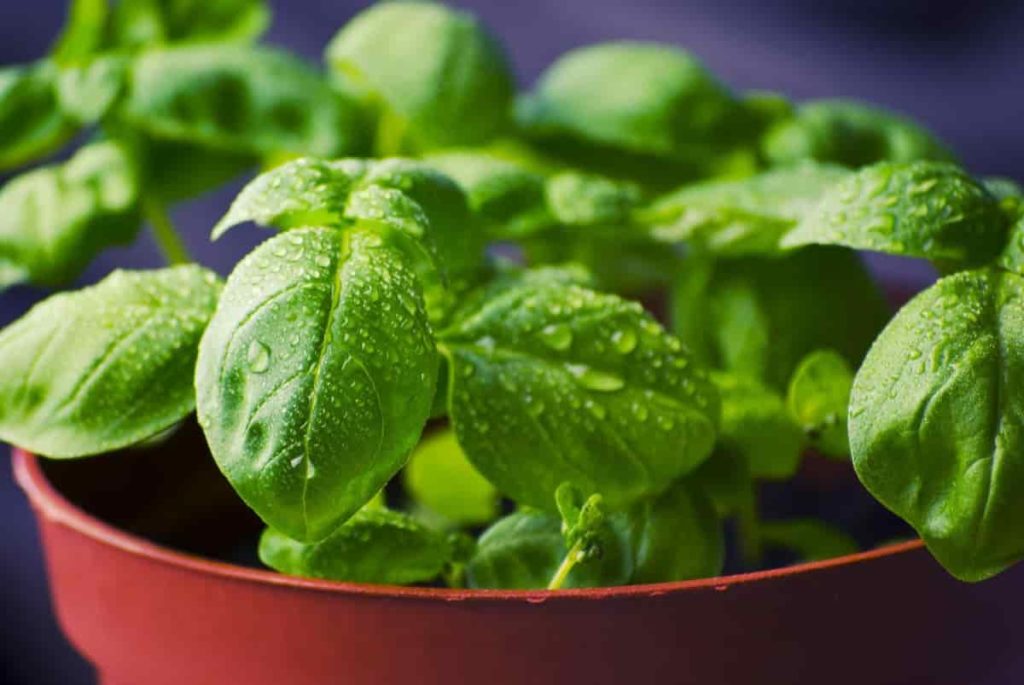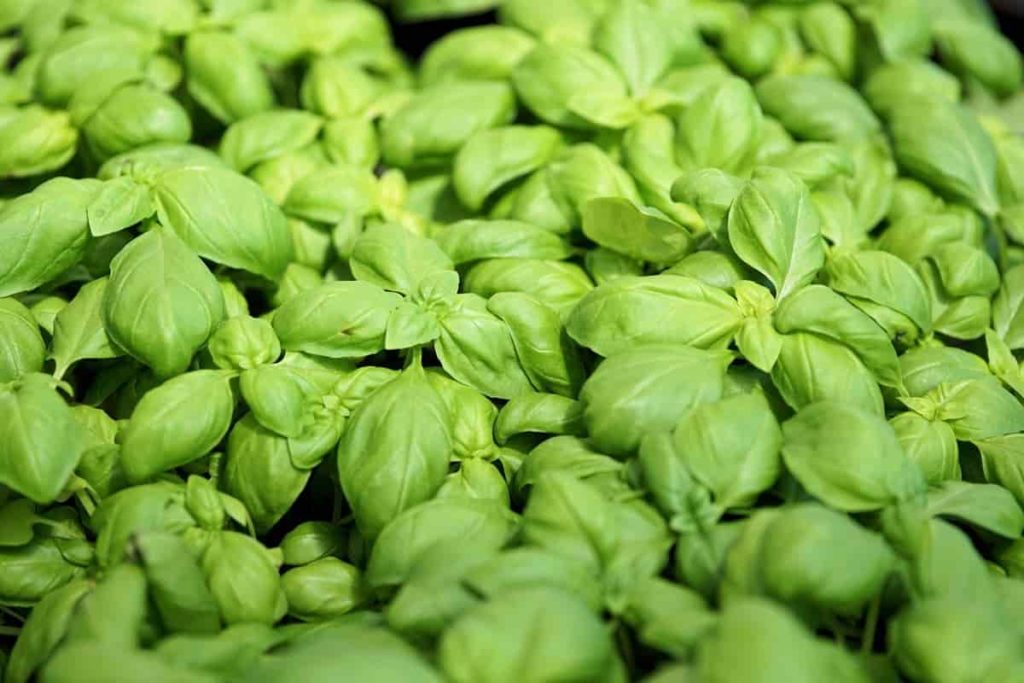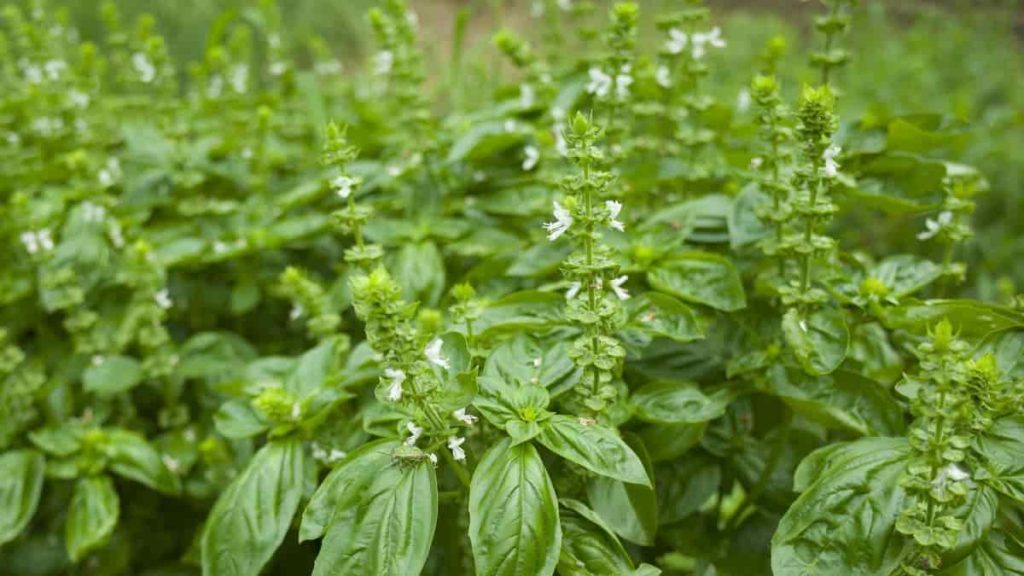All plants suffer from multiple problems; Basil is no exception. The more varieties a plant as you will have more problems growing it. It is especially true if you grow a hybrid that inherits both parents’ health problems. Since Basil has been present for thousands of years, it has more cultivars than natural species. Basil is a prevalent herb, but unfortunately, it can be prone to several plant pathogens, which can ruin the crop and reduce plant production if you do not take care of the plant in the best possible way. Let’s check out the common Basil plant problems below.

Whatever varieties of Basil you grow, holy, lemon, Thai, or Genovese Basil plants can sometimes be stricken by pest and disease problems. You face a lot of issues while growing Basil. But the main reasons are soil deficiency, high/underwater, too much or too little sunlight, fungal/bacterial/insect infestation, or improper trimming. Some of the growing problems of Basil are most affected where it is essential, in the leaves themselves. They turn yellow, create holes, or curl and turn bitter. Other problems are related to the temperature drop, and the plant’s survival is at stake.
Common Basil plant problems
Wilting of Basil plant leaves
When the soil is arid, the Basil plant leaves are wilting (hanging), and the leaves still feel soft. It means that your Basil plant needs water.
Solutions – More water is much worse than underwatering your Basil plant. So, when you see the Basil plant wilting and starts bending, there is no need to panic. Instead, it’s better to wait to water the plant until it starts to turn a little. Basil plant will recover very soon after watering, and the stems will stand upright, and the leaves will look healthy again.
Basil plant leaves turning yellow
When you see leaves are turning yellow (often starting with lower leaves) and leaves bending, wilting, and regularly watered for the last two days, you might have given more water to your Basil plant. Unfortunately, continuous water has blocked the soil around the roots, and as a result, the roots have started rotting. You can recognize rotting roots when you remove the plant from the pot, and you see that the roots are brown or black and when they feel soft and moist.
Solution –Stop watering immediately and preferably put it in a good state of sunshine or light so that the soil dries up as quickly as possible. In some cases, when the roots have been exposed to wet soil for a long time, it may be possible that you can no longer save the Basil plant.
You should check that excess water can drain out. If the Basil grows in a pot, you will remove the plant from its pot, check the holes below, remove the moist potting mix, and remove the moist soil from the roots. And replant using dry potting mix. Do not water for at least a few days unless you see the plant recover, then remove yellow leaves.
In case you missed it: Growing Hydroponic Basil, Hydroponic Basil Nutrients

Bitter-tasting Basil
You harvest leaves and trim old trunks; the plant grows new shoots and replaces the lost leaves with new and fresh leaves. But if you do not do so and let the herb grow without any interference, the leaves become bitter as the plant goes into the seed.
Solution – First, you need to start pruning the herb. Collect all the old leaves and cut off about one-third of the leaves. Repeat the same process next week. If you see any flower buds, cut them before blooming. Within a month, you must have removed all the leaves. It starts new growth, and the new leaves will taste sweet and regular.
Feed it with organic fertilizer or aged manure if the plant grows in the garden. If it is a potable plant, use 5-10-5 fertilizers as you wish. Plant food once every three weeks and apply water immediately after each application. If this does not solve the problem, try to sift through the plant by leaving just one stem. Fertilize the plant and water to ensure it is getting enough sunlight or find a different type of Basil. Both sweet Basil or Thai sweet Basil are known for their extra sweet leaves.
Leggy plants
- Too much fertilizer – Feeding Basil can often lead to large, fast-growing plants. But they can also grow very fast, with low-quality leaves and long buns. The oils in the leaves that give plants their distinctive flavor will also be reduced by too much fertilizer, making the leaves unpleasant.
- Temperature drop – Temperature drops can also affect Basil plants and prevent their growth. They are susceptible to temperature reductions, preferring a hot climate.
- Not enough sunlight – If the light is not enough, the problem of the Basil grown indoors, they will be long enough to search for light. Prune and move to a bright area, and new growth should return to normal.
Solution – Always fertilize according to package instructions. Be careful to plant them only after the possibility of frost passes to avoid long growth after a cold snap. Leave to grow a little later towards summer in spring or grow into containers that can be moved indoors in cool temperatures overnight. Basil plants need a lot of sunlight, at least 6 to 8 hours a full sun day.
Basil leaves curling
The Basil leaves are usually dark green and flattened. But sometimes, they turn down into a tube and turn. The reasons often vary from sunlight deprivation to inadequate water and diseases.
Solution – Sometimes, there is more than one reason for this problem. It is unclear why herb leaves are being turned down when water, sunlight, and fertilizer are good; you’ll need to look for insects.
In case you missed it: Growing Tulsi in Pots (Holy Basil), Planting, Care Guide

- Light – If your Basil is not getting enough sunlight, the leaves will turn bitter, yellow, and even fall. If you are sown Basil in a pot, move it to a west or south-facing window where it gets 6 hours of sunlight daily in spring and summer.
- Water – Basil prefers the soil to be moist but not too wet. It is also sensitive to dry soil. However, when in doubt, make a mistake on the drought side. Check the soil before watering the plant and make sure the top two inches are dry. The Basil plant needs one inch of water every week during the growing season. For perennial Basil, in the fall and winter, cut back and water only when the soil is dry.
- Insects – Some insects will hole in leaves while eating juice, while others will damage the structure of the plant. It prevents moisture and nutrients from reaching the leaves. Typical suspects are often Aphids, scales, and spider mites. Spray the plants with neem oil or rub the basil well with rubbing alcohol.
Small and deformed Basil leaves
When you see that the new leaves of your Basil plant are staying small and healthy, Basil leaves don’t have a regular oval shape; your Basil plant may not be getting enough light. It is especially the case with Basil plants which are kept indoors. Due to lack of sunlight, which requires plants to produce healthy leaves. Basil grows best with warm temperatures, sunlight, and plenty of good water. Getting more of your plants in the sun will help in photosynthesis.
Solution – You have to find a place where there is a lighter in the quantity and quality of the Basil plant, or you have to look at adding some grow lights with considerable intensity.
Woody Basil plants
Sometimes the stem becomes wooden where they lose its soft texture, color, and fragrance.
Solution – The stem gets harden for many reasons. Most notably, the lack of moisture in the soil makes the stems wood. Sometimes fungal infections are behind this abnormal health.
- Checking the soil pH – If your soil pH is from 6.5 to 7.3, you risk having wooden Basil stems. Modify the soil with lime to increase acidity. 450 grams of lime adds 0.5 points to acidity for each square foot.
- Water – Keep the herb well hydrated, especially during the hot summer months. If the soil dries up very quickly, increase the water quantity to 2 inches and irrigate three times a week. Keep the water shallow and do not wet the soil. Too much water causes more damage than dry soil.
- Pruning -Another reason for the wooden stems is related to flowers. As flower buds open, the plant stops all new leaf growth and focuses primarily on flowers and seeds. So cut the flowers as soon as they bloom. Or you can cut flower buds soon and keep harvesting leaves. It will lead to new growth and prevent wooden stems.
In case you missed it: Growing Basil from Cuttings, Seeds – A Full Guide

Nutrient deficiency
Plants need to grow the full size and continue production and or specific nutrients, in the case of Basil, delicious leaves.
- Nitrogen deficiency – A lack of nitrogen can cause yellow leaves on your Basil plant, usually towards the base of your Basil plant. Your Basil can also remain smaller than usual as Basil grows best when it contains all the nutrients it needs.
- Phosphorus deficiency – Phosphorus deficiency appears as areas on your lower leaves of purple spots on Basil plants. The lack of phosphorus is also related to Basil flowers that appear earlier than normal.
- Potassium deficiency – The leaves are covered with brown spots, eventually turning yellow and brown leaves on the ends. It seems to be more common in hydroponics and container gardens.
Diseases that affect Basil plants
Downy mildew
Downy Mildew is a common disease that affects plants. Yellow leaves or browning leaves are the most common symptoms of Downy Mildew. If the leaves are yellow, check the bottom of the Basil leaves and see if you will find anything that looks like the dirt of a cobweb.
Solution – There are many ways to control Downy Mildew disease. Anything you can reduce moisture, for example, spacing plants very well to allow more airflow around plants. If you grow Basil in pots, you should give more water. You can bring the pots indoors in during the night to avoid morning dew, which can help delay the onset of the disease. But the best thing you can do so far to prevent this disease is to apply a resistant cultivar. Downy Mildew seems to be a problem for mainly sweet Basil.
Bacterial leaf spot
Spots on leaves are water-soaked and dark. They can be angular and clear from small veins in leaves or irregular shapes. The disease is spread by wet, humid conditions, spraying water or dealing with infected tissue, and touching other plants.
Solution – Reduce moisture on plants with low humidity and enough plant spacing for proper movement to reduce leaf wetness periods. Remove the diseased leaves and plants to reduce inoculum levels. Use clean, sterile devices and do not move between infected and healthy plants.
Fusarium wilt
Yellow, wilting leaves; brown stripes at the lower level of leaves.
Solution – Use disease-free seeds only. Before planting, treat seeds with hot water to kill fungus; if present in the garden, rotate the crop every 2 to 3 years with a crop other than Basil or mint.
In case you missed it: Helpful Tips from Experts for Home Gardening: Hints, Tips, Ideas for Beginners

Pests that affect Basil plants
Aphids
Aphids suck the juice on the basil plant leaves. Aphids are very difficult to avoid. The Aphids like to invite on the Basil plant and make the growing Basil a little more challenging.
Solution – You can use hydrogen peroxide and wipe them off your Basil plants. Spread Diatomaceous Earth on your plants. It will not hurt the herb plants or leaves, but it will become a terrible home for insects as fine dust enters their shell and they will not want to return.
Whiteflies
Whiteflies are closely related to the aphids and mealybugs, but they’re not the same thing. Whitefly appears under the leaves and is most active during the day.
Solution – Spray the plant with a combination of dish soap and water – all you need is a drop of soap in water per gallon and spray the plant leaves.
Snails and slugs
The slugs look out of nowhere and quickly lay enough eggs to build a decent-sized colony in the garden. Although they can travel slowly, it doesn’t take long for problems to appear because of them, and soon you may feel some holes in your Basil. Then check the eggs and larvae; they look like small balls in the soil. Remove eggs and larvae from them as you can.
Solution -Those eggs/larvae are very sticky, so you can use a tool to get them out of the garden soil.
Cutworms, loopers, owlet moths, and underwings
The early-stage larvae eat terminal clusters and later-stage larvae skeletonize the leaves. In addition, they will cut the seedling stem near the base resulting in heavy damage.
Solution – Pick larvae by hand and kill them. Remove and destroy the residues of herbs and crops. You should spray a biocontrol agent (bacteria/virus) to kill insects. Spray proper pesticides if the infection is severe.
Flea beetle
Small holes or pits in leaves give leaves the shape of a characteristic shot hole; young plants and seedlings are susceptible; it can reduce plant growth. If damage is severe, it can kill the plant; the insect responsible for the damage is a small dark-colored beetle that jumps when disturbed; the beetle is often shiny in shape.
Solution – The thick mulch layers can help prevent beetles from reaching the surface. The application of oils such as diamotecoeus earth or neem oil is practical to control methods for organic farmers; the application of pesticides containing carbaryl, spinosad, bifenthrin, and permethrin can provide adequate control over beetles for up to a week but will need to be reapplied.
In case you missed it: Top 10 Tips to Protect Plants from Frost: Ideas and Techniques for Beginners

Leaf miners
Heavy mining can result in white stains falling from the plant prematurely on leaves; the early attack can cause fruit production to decrease; adult leaf-mining is a small black and yellow fly that lays its eggs in the leaf; larvae hatch and feed the leaf interior.
Solution – Check the transplant for symptoms of leaf-mining loss before planting; remove the plants from the soil immediately after harvesting. Use pesticides only when the leaf minor damage is identified.
Root knot nematode
Galls on roots can be up to 1 inch in diameter but are usually small; plant strength loss; yellow plants wilt in hot weather.
Solution – Choose resistant species if nematode is known to be present in the soil; check plant roots mid-season or early if symptoms indicate nematodes; solarizing soil can reduce the level of nematode population in the soil.
- How to Grow Tomatoes Organically at Home: A Comprehensive Guide
- Organic Gardening on a Budget: Low-Cost Methods and Materials
- Gongura Seed Germination and Planting Methods
- Cabbage Seed Germination and Selection
- Broccoli Seed Germination and Selection
- Asparagus Seed Germination and Variety Selection
- Seasonal Flower Gardening: Best Practices for Spring, Summer, Fall, and Winter
- How to Grow Hibiscus from Flower
- Plantation Ideas for Home Decoration: A Beginners Guide
- Flower Garden Designs and Layouts for Beginners
- Planting and Spacing Techniques in Papaya: A Beginner’s Guide
- Growing Gold: Essential Techniques for Planting Pineapples
- How to Make Kalanchoe Plant Bushy: Home Remedies and Solutions
- 11 Reasons Why Your Gardenia is Not Blooming: Home Remedies and Solutions
- Eco Elegance: The Guide to Designing a Drought-Tolerant Landscape
- Gardening on a Slope: Strategies for Hillside Landscaping
- Nourish and Flourish: Top Organic Mulches for Thriving House Plants
- Everything You Want to Know about Indian Mogra Flower: Discover Uses and Growing
- Green Thumb Success: Expert Tips for Cultivating Greenhouse Pumpkins All Year Round
- Maximize Growth & Flavor: The Ultimate Guide to Companion Planting in Herb Gardens
- How to Control Rhododendron Problems Naturally: Home Remedies and Organic Ways to Fix Them
- Natural Magic: The Remarkable Benefits of Cinnamon for Plants
- Best Steps to Revive Dying Tulip with Natural and Organic Treatment
- 10 Reasons Why Your Angel Trumpet is Not Blooming: Remedies and Treatment
- How to Fix Periwinkle Leaf and Flower-Related Problems: Natural Remedies and Solutions
- How to Fix Zinnias Leaf and Flower Problems: Discover Natural and Home Remedies
- Organic Steps to Induce Lemon Tree Flowers: A Comprehensive Guide
- Bloom Booster: Crafting the Perfect Homemade Bougainvillea Fertilizer
- Optimizing Growth: A Guide to Applying NPK Fertilizer for Potted Plants
- 10 Best Homemade Fertilizers for Rubber Plant: DIY Recipes and Application Method
- How to Boost Female Pumpkin Flowers: Effective Steps for More Flowers and High Yields
- Transform Your Indoor Garden: Top Benefits of Pink Salt for Houseplants
- 10 Best Homemade Fertilizers for Peacock Plants (Calathea): Easy DIY Guide
- Unlock Blooms: 9 Reasons Why Your Potted Chrysanthemum is Not Blooming
- 8 Reasons Why Your Potted Hibiscus is Not Blooming: Fix it with Simple Solutions
- Unlock Blooms: 9 Key Reasons Your Potted Frangipani Won’t Flower